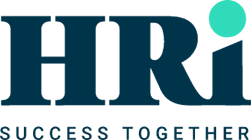Latest from HRi
Accelerating Gender Equality
Gender equality is essential for business success, innovation, and employee well-being. Yet, challenges like the gender pay gap and underrepresentation in leadership persist. According to the ONS Gender Pay Gap Report 2024, while progress is happening, disparities remain, particularly for women over 40 and those in higher-earning roles. Let’s explore what businesses can do to create workplaces where everyone has the opportunity to thrive.
Why Gender Equality Matters
When workplaces champion gender equality, everyone benefits. Diverse teams bring fresh perspectives, foster innovation, and drive business growth. Yet, women continue to be underrepresented in leadership roles. In fact, the House of Commons Library Gender Pay Gap Report found that women’s median pay is 13.1% lower than men’s, highlighting the need for change.
Key Challenges
- Gender Disparity: Leadership roles are still predominantly held by men, limiting diverse perspectives.
- Limited Resources: Smaller businesses may face challenges due to limited budgets, fewer HR resources, and the absence of formal policies. These constraints can make it tough to provide comprehensive training, mentorship programs, and flexible work arrangements, impacting women’s career development.
- Cultural Barriers: Stereotypes and biases continue to limit women’s career progression, reinforcing outdated roles.
Taking Action:
- First and foremost, develop clear career pathways that support women’s leadership progression.
- Create mentorship and sponsorship programs that empower women and help them build professional networks.
- Promote transparency in recruitment, promotions, and pay structures.
- Offer leadership training that tackles gender biases, encourages inclusive decision-making, and builds confidence. This should include practical workshops, real-world case studies, and mentorship from experienced leaders.
Example: For instance, Google’s Women Techmakers program offers resources and networking opportunities that help women thrive in tech and leadership roles.
Closing the Gender Pay Gap
Despite progress, the gender pay gap remains a challenge across industries. Transparent pay practices are essential to narrowing this gap. Specifically, the DBT Gender Pay Gap Report 2024 found a mean pay gap of 5.24%.
Why the Pay Gap Persists:
- Lack of Transparency: Without clear salary structures, pay disparities can go unnoticed, leading to frustration and lower morale.
- Negotiation Bias: Women are statistically less likely to negotiate salaries, impacting long-term earnings. However, providing negotiation training can help bridge this gap.
- Unpaid Emotional Labour: Women often take on additional emotional and administrative tasks, like mentoring colleagues or managing team dynamics, which are rarely recognised or compensated.
Solutions for Businesses:
- Conduct regular pay audits to ensure equal pay for equal work.
- Define clear salary bands and promotion criteria to improve transparency.
- Offer negotiation training to help women advocate for fair compensation.
- Foster a culture where open conversations about pay and career development are encouraged.
Example: Salesforce’s pay equity initiative includes regular audits and negotiation workshops that empower women and help close traditional pay gaps. As a result, their approach has become a model for businesses striving to address pay disparities.
Women in Leadership – Building Inclusive Workplaces
Diverse leadership is crucial for innovation, better decision-making, and business growth. Yet, women still face barriers that limit their progression. For example, the CDP UK Gender Pay Gap Report 2024 shows that proactive measures have reduced their mean pay gap from 13% to 1.5%.
Barriers to Women’s Leadership:
- The ‘Broken Rung’ Effect: Women often miss out on early promotions, limiting their long-term career growth. This is especially true in first-level management roles, where fewer women are promoted compared to men.
- Limited Flexibility: A lack of flexible work options disproportionately affects women, especially those balancing caregiving responsibilities. Providing flexible schedules, remote work options, and family-friendly policies can help bridge this gap.
- Unconscious Bias: Stereotypes and cultural assumptions can influence decisions around promotions and leadership opportunities. Structured evaluation processes and awareness training can help mitigate these biases.
How to Drive Change:
- Create mentorship and leadership development programs, including both formal mentorship and peer support networks.
- Offer flexible work arrangements that accommodate diverse needs and promote work-life balance.
- Encourage women to apply for leadership roles and ensure promotion processes are inclusive and transparent.
- Build a culture where diverse perspectives are valued and everyone feels heard.
Example: Unilever’s Gender Balance Strategy has resulted in women holding 50% of managerial roles globally, thanks to mentorship programs, leadership development initiatives, and flexible work environments.
Practical Steps for Businesses
- Set clear and measurable targets for gender representation at all levels, tracking progress regularly and holding leadership accountable.
- Provide comprehensive training to reduce unconscious bias, including interactive workshops, real-world scenarios, and ongoing education to cultivate an inclusive culture.
- Develop flexible work policies that support employees with caregiving responsibilities, including remote work options, flexible hours, and parental leave.
- Implement anonymous recruitment processes to eliminate bias during hiring, ensuring that candidates are evaluated solely on their skills and experience.
- Establish employee resource groups (ERGs) that support women, promote networking, and create mentorship opportunities to help women advance in their careers.
- Encourage leaders to actively sponsor and advocate for women within the organisation, using their influence to remove barriers and create opportunities for advancement.
Taking Action for Gender Equality
Achieving gender equality requires both awareness and action. By closing pay gaps, supporting women’s leadership, and promoting inclusive practices, businesses can create workplaces where everyone has the opportunity to succeed. Gender equality isn’t just the right thing to do—it’s a strategic advantage that drives innovation, performance, and employee satisfaction.
Note: The ‘Broken Rung’ effect refers to the challenge many women face when advancing from entry-level roles to their first management positions. This early setback limits their long-term career progression, contributing to the underrepresentation of women in senior leadership. Providing mentorship and early leadership opportunities can help close this gap and build a more balanced leadership pipeline.
Author: Mary Asante | HRi
